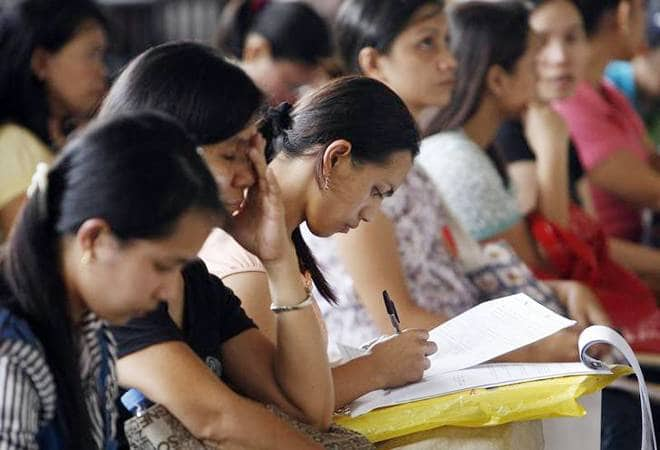ECONOMY
There is a widespread crisis in national employment and women are amongst the worst affected sections as far as loss of employment is concerned.
The New Leam Staff
According to the State of Working People Report 2019 nearly 6.1 per cent male employees have lost their jobs during 2017-2018. The study was conducted at the Centre for Sustainable Employment Azim Premji University to understand the rate of unemployment in India. The study was completed using the Consumer Pyramid Survey provided by the Centre for Monitoring Indian Economy (CMIE CPDX) which has a stock of the data of around 65 million workers in India.
The study had a sample size of 160,000 households and 522,000 individuals and it was conducted in three phases. Each spanning four months, beginning from January of every year. For the study and the report an employment-unemployment module was added to this survey in 2016. The data released in the study was based on the comparative data of Labor Bureau’s and NSSO statistics with the figures provided by CMIE- CPDX index. The questionnaire of the study was although very different from that of the NSSO and Labor Bureau’s survey questions.

The data which was obtained through this survey revealed that unemployment in general has increased post 2011 especially among the highly educated masses who account to 15-16 per cent of the total population (they are most unemployed people in the society).
The report further mentions that since 2016 there are higher job losses and lower employment opportunities for the overall population regardless of their educational qualification.
Women are worst affected by the unemployment crisis as their ratio of jobs has decreased and also their participation in the workforce has further declined.
Data released by the International Labor Organization suggested that data on women participation in the workforce in India was quite puzzling. It was documented by ILO that female participation in the workforce was on persistent decline between the year 1990 to 2012 it accounted to 34.7 percent and 27.2 percent respectively. It also observed that there was considerable difference in the rate of unemployment in urban areas and rural areas. The participation rate of rural women decreased from 26.5 per cent in 2009-10 to 25.3 per cent in 2011-12 while the rate for urban women increased from 14.6 per cent to 15.5 per cent in the same period. The Data from 2011-12 suggests that fewer women in rural areas are working and even if they are working, they are more likely to be in subsidiary or more marginal employment.
There are various reasons for the declining number of women participation in workforce (In India) starting from low level of educational opportunities to the burden of household responsibilities. The problems for a steep decline in employment ratio amongst women are both micro and macro.
Coming back to the report on State of Working People in 2019 it suggests that there was a decline in the labor participation of both urban and rural men during the period of September and December 2016. Although the decline slowed down in 2017 but there wasn’t any marked improvement observed. The report observes an interesting fact that the phenomenon of declining participation of men in the labor force started soon after the demonetization jibe in 2016.
The report further made some valuable suggestions for improving the situation of the Labor Market, it noted that an improvement and valuable investment in the existing MNREGA scheme that strengthens small and medium-sized towns in India by providing urban residents a legal right to employment, improving the quality of urban infrastructure and services, restoring urban commons and ecology, skilling youth, and increasing the financial and human capacity of Urban Local Bodies can be helpful.
An improvisation in the MNERGA programme will not only address the problem of unemployment but also address other key issues like under employment and low wages in the informal urban workforce, migration to large cities from small and medium towns, poor quality of urban infrastructure and services, ecological degradation of urban spaces, shortage of human and financial capacities of urban local bodies, unemployment and lack of skills in the educated labor force.
In January NSSO, Ministry of Statistics and Programme Implementation survey data was leaked which stated that India’s unemployment rate has hit a 45-year-high of 6.1 per cent in 2017-18.
The unemployment rate was at its highest level since 1972-73. The report further said that unemployment was higher in urban areas 7.8 per cent as compared to 5.3% in rural areas of the country.
Both the State of Working People 2019 and the NSSO report indicate at important developments ahead of the Lok Sabha Election 2019 especially when political parties are campaigning with the rhetoric of creating of 100 million jobs in India.














